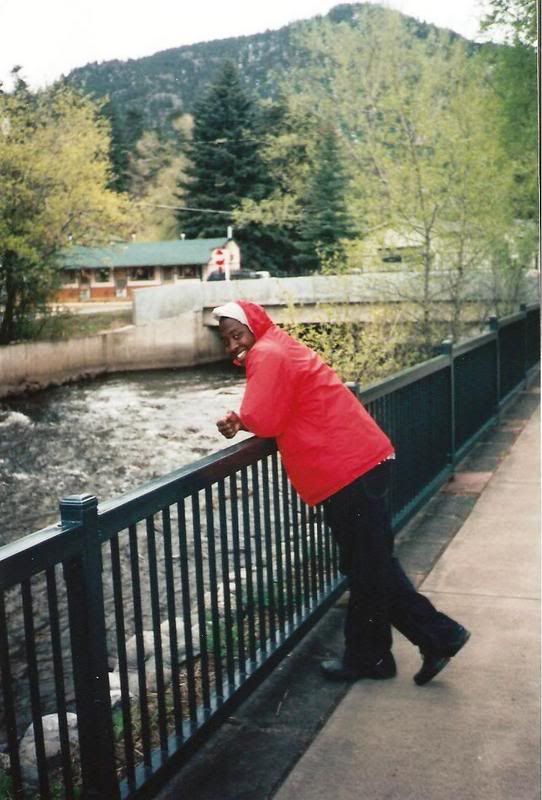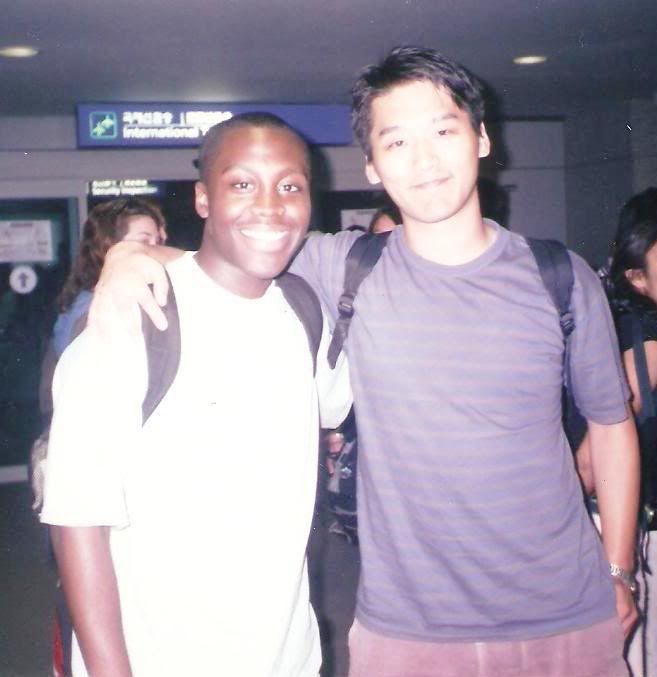My Global Hustle
Carnival Music
Sad that U can’t make it down to Trinidad for Carnival? Here is a website that features all the BIG TUNES making waves during Carnival in Trinidad (ThxNikechia). Now you can shake your booty in your cubicle like you were in the Port of Spain.
Enjoy!
~YG
Young travelers are becoming today’s nomadic tribes…
 By Ellen Creager, Detroit Free Press
By Ellen Creager, Detroit Free Press
Although he’s not even out of high school, 11th-grader Thomas Jones has traveled more than many adults.
“I’d like to go back to Italy, and to Paris, and back to Florida,” he says. “The traveling has really impacted me.”
At 16, the bassoon player has spent a month with a band-orchestra playing in Europe. He has also played in school-related concerts and competitions in Orlando; Washington, D.C. and Chicago. Now he’s scheduled to visit New York City next spring with his Grosse Pointe Woods, Mich. high school band and orchestra.
Thomas doesn’t know it, but he’s a statistic and a symbol of a trend. Children who start traveling when they are young become lifelong travelers. They are more likely to travel in high school. They’re more likely to study abroad in college. And they’re more likely to carry their love of travel into adulthood.
“There’s also a connection between trips and academic achievement,” says Michael Palmer, executive director of the Student and Youth Travel Association in Clarkston, Mich. “And it makes them better global citizens.”
 The student and youth travel market is a huge 20% segment of all the travelers in the world. Among the fastest-growing segments, it includes not only college students age 25 and under, but increasing numbers of middle- and high-schoolers and even elementary children on group day or overnight school trips for band, choir, church, sports or science, civics and language classes.
The student and youth travel market is a huge 20% segment of all the travelers in the world. Among the fastest-growing segments, it includes not only college students age 25 and under, but increasing numbers of middle- and high-schoolers and even elementary children on group day or overnight school trips for band, choir, church, sports or science, civics and language classes.
Nearly 206,000 American college students studied abroad last year, up 8% from 2004.
The average age for younger students’ first school trip these days is 10. Nearly 61% of all children ages 12 to 18 report taking a group trip in the past year, according to research done at Michigan State University for SYTA.
Destinations worldwide are catering to young travelers “because they know if they get a teen to visit, they will come back,” Palmer says. “Before, group travel focused on senior citizens. Now, it’s student travel.”
 New York, Washington, D.C., Chicago, California and Orlando, tend to be the most popular domestic destinations for student travel, but some trips spirit students abroad to Toronto, Ottawa or all the way to Europe or Australia.
New York, Washington, D.C., Chicago, California and Orlando, tend to be the most popular domestic destinations for student travel, but some trips spirit students abroad to Toronto, Ottawa or all the way to Europe or Australia.
Many secondary school educational student travel market trips are band and orchestra related. Sports-related travel is exploding — a child soccer player from the Midwest might travel to a meet in California or Florida with his or her team. Language class-related travel and eighth-grade civics trips are perennially popular, too.
What about spring break travel?
“It’s less than 6% of student travel, but it gets 80% of the publicity,” Palmer says. “And spring break is going downhill. This new generation is more conservative, more sophisticated. And these days, a lot of school-related travel is set up during spring break.”
Right after 9/11, student trips to Washington, D.C., and New York fell off, and Orlando was flat. But those traveling to those destinations has bounced back. In addition, there’s been a rebound of college students traveling on their own — not doing study abroad, but just picking up and going to China, Argentina, southern Europe, Australia, even India.
These days, “kids expect to travel,” Palmer says. “They’re not fearful.”
“Under age 18, they tend to go to more conservative destinations. But over 18, they’re pioneering destinations outside the typical. A lot of college students are experienced travelers. The younger they started traveling, the more they want to travel now.”
 Of course, there is a difference between urban and suburban kids. The urban kids have less opportunity for travel. Also affecting educational travel is the “No Child Left Behind” federal plan.
Of course, there is a difference between urban and suburban kids. The urban kids have less opportunity for travel. Also affecting educational travel is the “No Child Left Behind” federal plan.
“Everything has to be related to the curriculum,” Palmer says. Tour operators are figuring out how to do that: “We even have science trips to Disney and physics trips to Cedar Point (in Sandusky, Ohio).”
One issue potentially damaging to student travel is the change in the passport laws. Starting Jan. 23, U.S. citizens will need a passport when flying home from any other country, even Canada.
“Students are the least likely to have passports. Fewer than 10% do. The impact on kids group travel will be big,” Palmer says. “We are continuing to put up barriers to travel in the United States.”
Those barriers, however, likely won’t be enough to stem the flood of student travel.
On the Web: www.syta.org, Student-Youth Travel Association.
HAPPY BDAY TONE……
In honor of my dude Tone (aka Red Hot Lover Tone) who celebrated his bornday( good times… 🙂 ) over the weekend…. I figured lets take you waaaaaayyyyyy back. I know he’s going to kill me for posting this, but since we didn’t take any pics this will have to do…. Its all love homey….lol
~YG
[youtube=http://www.youtube.com/watch?v=GfWQklgh1_E]
DAVOS 2007
 Well it’s that time of the year again! The World Economic Forum’s Annual Meeting in Davos, Switzerland is upon us. This conference brings together an amalgam of world leaders in areas ranging from politics to religion to business. This will be the first year in a long time that I won’t be participating in the conference, but I will be observing intently and blogging away. 🙂 To my friends in Davos…..Good Luck!
Well it’s that time of the year again! The World Economic Forum’s Annual Meeting in Davos, Switzerland is upon us. This conference brings together an amalgam of world leaders in areas ranging from politics to religion to business. This will be the first year in a long time that I won’t be participating in the conference, but I will be observing intently and blogging away. 🙂 To my friends in Davos…..Good Luck!
~YG




